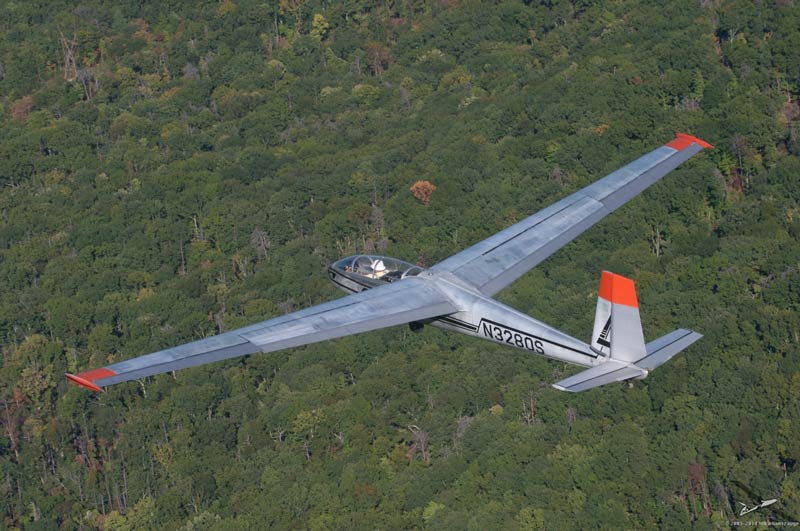How to Leave a Thermal

A few weeks ago I mentioned once the thermal averaged drops then leave. Really it should be once it drops below your average of your next thermal, then leave. Don't leave a thermal until you feel that you can beat it. I have rolled out of an embarrassing amount of thermals to only look at the average too late. Effectively leaving a good thermal for a worse one.
Let's think more about the rollout. I want to have exited the thermal with speed. Why? Because I want to get through the sink faster. Actually, I want to already be at speed when I run into the sink. Which means I need to be accelerating while still in the lift. To do this you need to move the glider a little farther backward of course line, then tighten up (approx 180 degrees before rollout) and exit crossing through the core. Use SeeYou to see how well you are doing this.
But wait you say... Sometimes the lift trails out longer and you can continue climbing going straight. Yes, that's generally an into the wind phenomenon. You can always slow back down if you feel it's a long lift line. Let's play the game of odds.
You have a poor exit and lose 200 ft. You climb an extra 100 ft after rolling out then accelerate perfectly. You exit with speed and back on task reducing the chance for error while reducing the chance of gain too. You have to look at what is going to be best over an entire day of thermals. Again take a look at SeeYou, look at thermal from the side view, you might be surprised by the lack of good results over the entire day.
The odds are better going into the wind or under a cloud that you could find lift. Might be worth a course deviation to head into the wind before turning back on course. This is more beneficial when the airmass is less predictable and not a clearly defined thermal with a core. You also can still slow back down if the lift is continuing, but be ready for the drop...
Many times when flying the Nimbus 4DM with George Lee we would only slow down to 70 kts. We would also roll back out and if we ran into the good air we would slow down to 70 kts. If it is really good it might be worth it to fly min sink. Remember what goes up must go down...
Again look at SeeYou and see what gain or loss you are really achieving.
Banner Photo by Mika Ganszauge
The Glider Flying Handbook is beautifully illustrated full–color technical manual, for applicants preparing for glider category ratings and for currently certificated glider pilots who wish to improve their knowledge.
This is the FAA’s primary technical manual for the required aeronautical knowledge necessary to operate a glider. It is essential reading for applicants preparing for the exams for private, commercial, or flight instructor pilot certificates with a glider rating, as well as for currently certificated glider pilots who wish to improve their knowledge. Flight instructors will find this handbook a valuable training aid since it includes detailed coverage of aeronautical decision making, components and systems, aerodynamics, flight instruments, performance limitations, ground operations, flight maneuvers, traffic patterns, emergencies, soaring weather, soaring techniques, and cross-country flight.
 Garret Willat holds a flight instructor rating with over 8000 hours in sailplanes. His parents have owned Sky Sailing Inc. since 1979. He started instructing the day after his 18th birthday. Since then, Garret has represented the US Junior team in 2003 and 2005. He graduated from Embry-Riddle with a bachelor's degree in Professional Aeronautics. Garret represented the US Open Class team in 2008 and 2010 and the Club Class team in 2014. Garret has won 3 US National Championships.
Garret Willat holds a flight instructor rating with over 8000 hours in sailplanes. His parents have owned Sky Sailing Inc. since 1979. He started instructing the day after his 18th birthday. Since then, Garret has represented the US Junior team in 2003 and 2005. He graduated from Embry-Riddle with a bachelor's degree in Professional Aeronautics. Garret represented the US Open Class team in 2008 and 2010 and the Club Class team in 2014. Garret has won 3 US National Championships.








